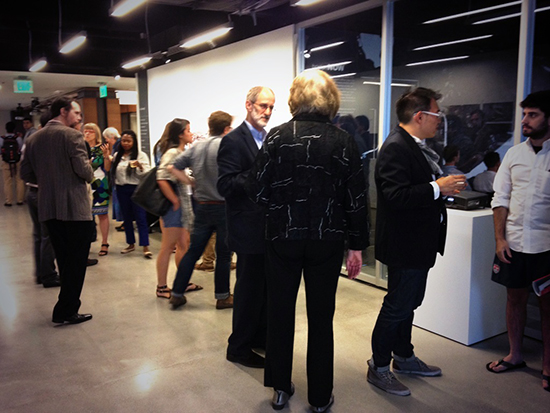
Last week at cultureNOW’s bi-coastal Pecha Kucha-style event, we heard from design professionals across industries. We heard about civic participation in public spaces, particular built environments including the details of Anthony Corcia’s skywave house. Peter Vanderwarker shared images from his photographic history of Boston project, focusing on the central artery. Our president, Jim Collins spoke about PAYETTE’s focus on high design within high technology buildings.

“Our Boston-based firm, PAYETTE, focuses on the design of high technology buildings for healthcare, academic institutions and corporate America. Sadly, I think if you were to reminisce about your college experience, probably the worst building on campus was a high technology building from the 1960s, 70s or 80s, unless you had the great exception of studying on the Penn campus or Harvard with a few other notable exceptions. The design is more depressing for any current community medical center in America. All that began to change around 10 years ago as colleges and universities began to understand that design mattered. As an architectural firm, we are truly pleased to see this shift. Our firm has an equal passion for design as we do for the technical execution of our projects. The even better news is that corporate America understands the importance of design and this understanding has begun to extend to major medical centers, such as Jane’s [Jane Weinzapfel] example of the Mass General Museum [MGH Museum of History and Innovation], here in this city.
Why is this happening? Some of it is about an increased awareness of sustainability and also, an understanding of architecture beyond program, but more importantly, our humanity is coming forward. We’re starting to understand even high technology buildings are not only about the technology, but about the people, their relationships with each other and human interaction. And, now, all those traditional things in architecture that were simply about shelter and human behavior and creating spaces that inspire people to think and live and breathe are now found to be more important. I think that’s a terrific thing for our practice, it’s a terrific thing for architecture. Maybe all these people went out and saw one of Design Museum Boston’s benches; I’m not sure. However, I think it’s a terrific opportunity in the design profession to seize the day as our humanity emerges. Perhaps now design will be appreciated in a way that it hasn’t been for 50 or 60 years.”
Thanks to everyone who came out to the event and if you couldn’t make, the full event will be available on the iPhone for download through the CultureNOW app (available via the iTunes App Store).

